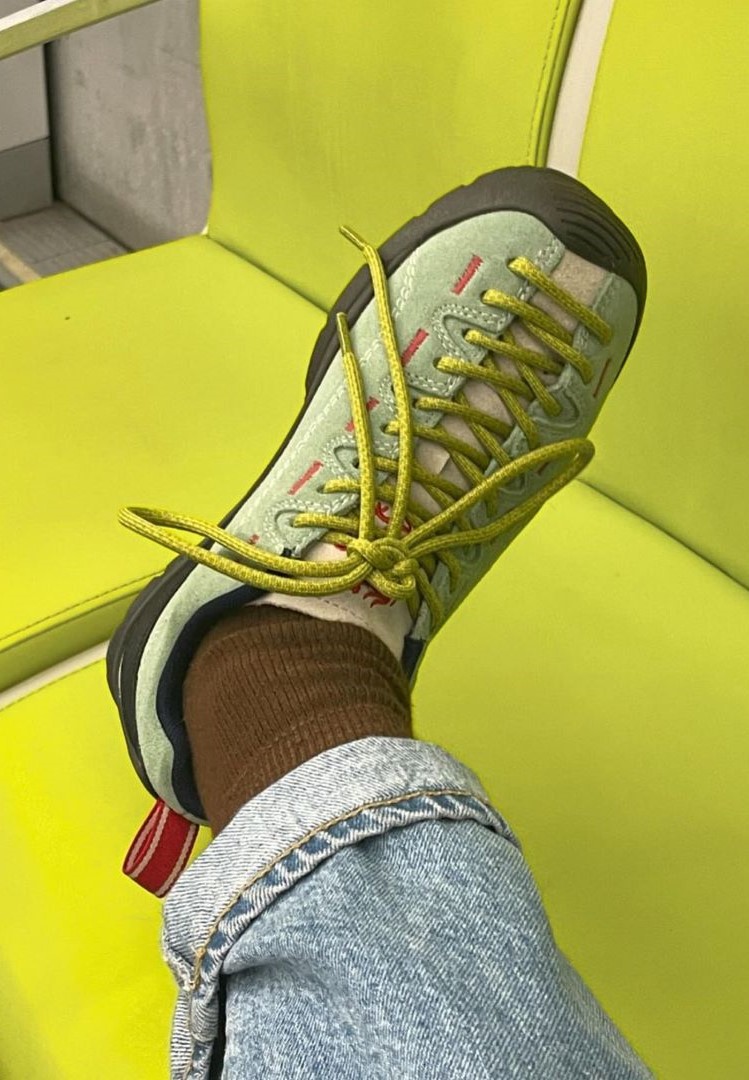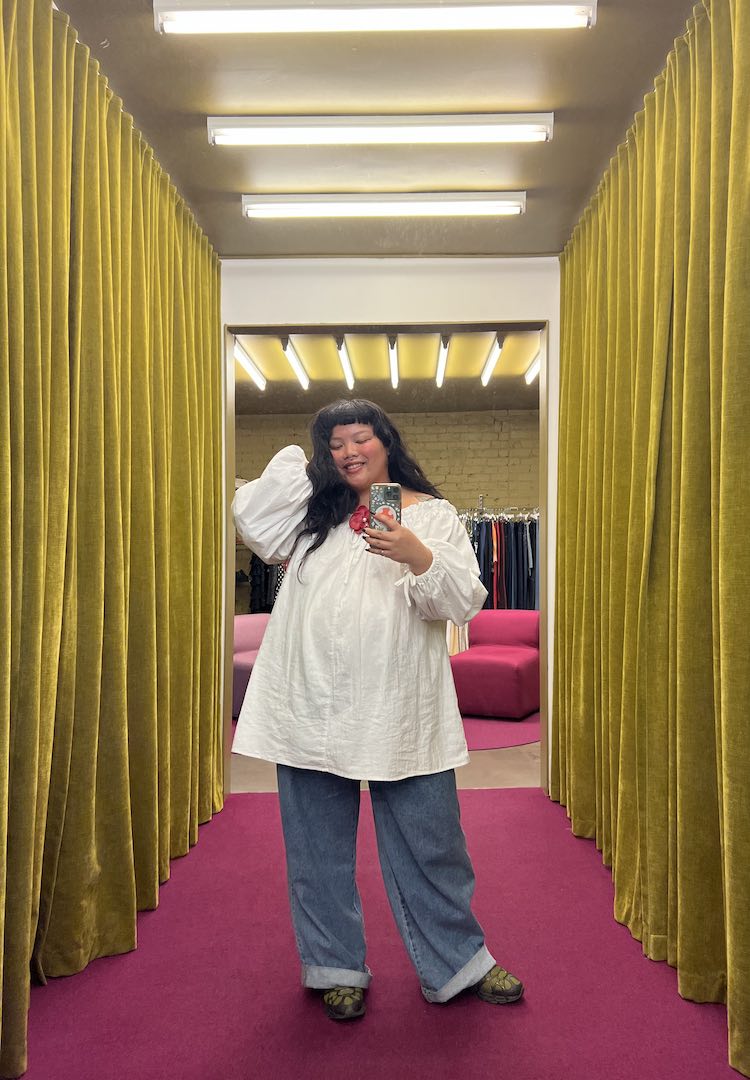What happens to fast fashion clothes after you donate them?
WORDS BY CAT FORSYTH
“We want fast fashion to slow down.”
A few months ago, I was housesitting a little way from home. The morning after my first night away, with nothing else to do (I was on uni holidays, after all!), I went down to the main street. After grabbing a much-needed iced latte, I decided to check out the local op shops, something I’ll do whenever I’m staying somewhere different.
There was a big Salvation Army (aka Salvos) and two smaller church-affiliated secondhand stores, and I decided to start with the Salvos. As I began flicking through the racks, right in my element, I realised a large percentage of the women’s clothes were fast fashion.
For more fashion news, shoots, articles and features, head to our Fashion section.
As a keen and routine shopper, I know what I’m used to seeing – usually there’s a fair bit of Zara and H&M, with a sprinkling of Shein, Fashion Nova and Boohoo. But this was different – every second dress was from a fast fashion brand, and I found this strange.
I continued browsing and eventually came across a long-sleeved bolero. It was the brightly coloured swirly pattern that drew me in – it gave off Pucci vibes, which I loved. I took it to the change room, excited to see what it looked like on me. When I tried it on I thought it was cute but I instantly knew I would wear it once and never again. It would sit in my wardrobe until a themed event or dress-up party came up, then get thrown to the back and forgotten.
Plus, it was cheaply made and had a weird, plasticky feel, as many fast fashion items tend to. As I put it on the return rack, a thought occurred to me: ‘I don’t think anyone is going to buy that’. A second realisation immediately followed: ‘What will happen to this, and all the other crappy fast fashion stuff, when no one buys it?’.
Considering the way we voraciously consume fast fashion (my past self included), there’s no way donating our clothing could make up for how quickly we throw things away. In search of some answers, I asked Salvos Australia what happens to discarded and unwanted fast fashion.
Firstly, what does Salvos classify as fast fashion?
[We classify fast fashion as] excessive fashion manufacturing volumes that exceed customer demand, where there’s no forethought for long-term ‘wearability‘. This often means these items – due to a deterioration in quality – end up in the bin after just a few wears.
Salvos are a part of a fashion revolution… we’re encouraging brands to be as transparent as possible about what they’re doing to promote sustainability and combat the damage being done by the fashion industry.
What percentage of the donations received by Salvos is fast fashion, approximately?
Due to the high volume of donations we receive across our national network of 358 stores, we don’t have an exact number of how many donations are made up of fast fashion brands. We acknowledge that fast fashion brands are part of our donation mix and are received from both our community and corporate donors.
As pioneers of the circular economy, enabling reuse in the community for over 100 years, Salvos Stores is an advocate for environmental change. We want fast fashion to slow down. Through donating… you expand a garment’s life cycle and avoid landfill. Additionally, the purchase of these goods helps fund vital Salvation Army programs to support those most vulnerable in our Australian communities. Win-win.
How does throwaway culture contribute to secondhand resale?
We’re seeing a strong shift away from the throwaway culture. People are more conscious of their buying behaviour than ever before. COVID-19 provided a pause for many people to evaluate how they consume and consider what they ‘need’ as opposed to [what they] ‘want’. As a result, we’re seeing more people consider shopping secondhand, buy quality goods and [look into] things like repair to extend the life of those goods.
What happens to the clothes that aren’t sold?
If an item has been on sale in one of our stores for a month without selling, it will be rotated to another Salvos Store or listed in our online store. We tend to mix it up and send [items] on to stores in different areas for more customers to browse, giving them more opportunities to find a new home.
We also send donations on to support The Salvation Army welfare programs like Crossroads, Doorways and many other local initiatives. Giving the donations we receive new lives in our stores and communities is always our first choice.
While most of the items we stock do get purchased by our customers, there is a portion of donations – like those that come to us in poor condition or are left after hours in the rain – that can’t be sold. However, this doesn’t mean that they’re all discarded into landfill. We have a variety of processes in place for repurposing or recycling what we can’t sell immediately.
Some unsellable textiles are processed into industrial rags, while other items not suitable for the Australian consumer market enter the global secondhand market. We’re committed to working with governments, universities and industry to develop onshore circular economy solutions.
Is it worth consumers donating fast fashion items?
The quality can vary between brands but most [pieces] are still good to donate [after a couple of wears] and someone else may love them! Size ranges have become more inclusive which is great… and the ever-changing trend pieces come to us a lot quicker than before.
Our product variety can be vast, which is great for unique-style shoppers. We encourage our supporters to consider repair before donating a ‘fix-up’ product, as we may not have the means to repair it for resale.
Lastly, what can we as consumers be doing to shop and donate more sustainably?
Think circularly. A circular economy is where the ‘bin’ never enters the product-life equation and where a product can be reused, repaired, regenerated and remade into new products each time. Completely circular [means] completely sustainable, minimising the impact on the planet.
Before the circular dream becomes a reality, we encourage our supporters to consider their purchasing power by shopping for preloved goods, buying quality-made new products and donating responsibly.
Head here for tips on how to shop online more sustainably.










